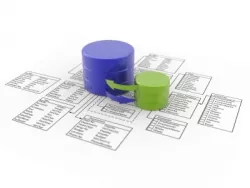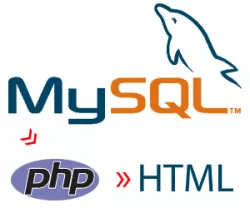Pre-configuration of a website for a social network on Drupal
In this lesson, I will preconfigure Drupal for a social network. I will install the following modules:
User profile in Drupal
Profile Page in Drupal
The profile page is the most complex and exciting part of any social network. I hope this will also be an engaging experience for you after reading this article. Drupal offers us several options for implementing user profiles. The first option available as a core module is the Profile module. This module is suitable if you want a very simple profile. But we're talking about a social network.
Developing modules for Drupal 7
In this section of the tutorial, I will demonstrate that Drupal is not just a CMS. We will explore what Drupal modules consist of, and we’ll also create a few of our own modules.
Drupal 7 - Working with DB via PHP PDO
With the transition to Drupal 7, we move to the new Drupal DB abstraction layer API, which is built on top of PDO. PDO has long been used in frameworks like Zend, as well as many other PHP frameworks. But everything seemed so convenient in Drupal 6 with writing plain SQL queries — so why do we need something new?
Let’s first understand what PDO is.
Working with Database in Drupal 7 - Lesson 1 - Drupal DB API
If you’ve written modules for Drupal 6, switching to the new Drupal 7 Database API won’t be too difficult. The new DB API is based on the PHP PDO extension, which gives it the ability to work with various databases like MySQL, PostgreSQL, MSSQL, and potentially Oracle. Whether it’s easier to use is subjective — getting used to the new syntax takes time, and writing SQL queries is still more familiar for many developers.
Here’s a brief excerpt from the official documentation:
Working with a Database in Drupal 7 - Lesson 2 - Database Configuration
The primary mechanism for defining a database connection in Drupal is the $databases array in settings.php. As the name implies, $databases allows you to define multiple database connections. It also supports defining multiple targets. A connection is not opened (i.e., a connection object is not created) until a piece of code executes a database query for the first time.
Working with a Database in Drupal 7 - Lesson 3 - Static Queries (SELECT)
The most common form of a query in Drupal is a static query. A static query is passed directly to the database as-is. Only SELECT queries can be static.
Use static queries only for very simple operations. For more complex, dynamically constructed, or modifiable queries, you should use dynamic queries.
The simplest way to execute a static query is via the query method:
<?php $result = $conn->query("SELECT nid, title FROM {node}");
?>
The preferred approach is to use the procedural wrapper:
Working with a Database in Drupal 7 - Lesson 4 - Dynamic Queries (SELECT)
We’ve now reached perhaps the most exciting part of Drupal’s Database API: dynamic queries. These are called "dynamic" because Drupal appends the query string on the fly. All INSERT, UPDATE, DELETE, or MERGE queries can be dynamic. SELECT queries can be either static or dynamic. However, it is recommended to use dynamic queries even for SELECT operations.
Working with a Database in Drupal 7 - Lesson 5 - Extenders
Select queries in Drupal support extenders. An extender allows you to add functionality to a SELECT query at runtime. This functionality can either be a new method or can override the behavior of an existing one.
This is achieved using object-oriented programming design patterns. Extenders implement the Decorator Pattern, attaching additional responsibilities to a dynamic object by providing a flexible subclass-like extension of query methods.
Working with a DB in Drupal 7 - Lesson 6 - Changing a Query on the Fly (hook_query_alter)
An important feature of dynamic SELECT queries is that other modules can alter these queries on the fly. This allows modules to insert their own instructions into a query, influencing its behavior or applying changes during execution—such as enforcing node access permissions. There are three components involved in altering queries on the fly: tagging, meta data, and hook_query_alter().



